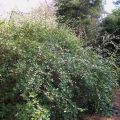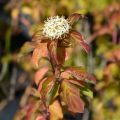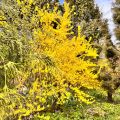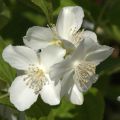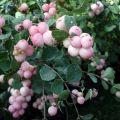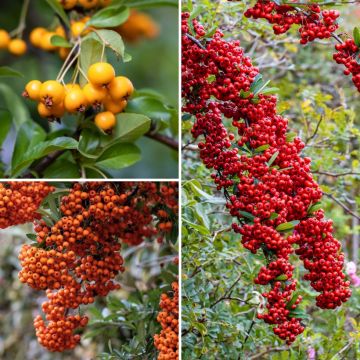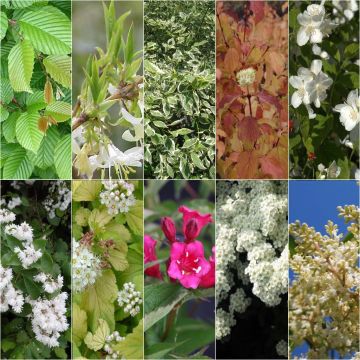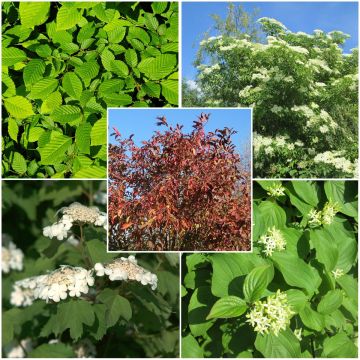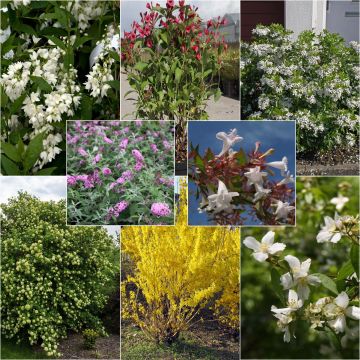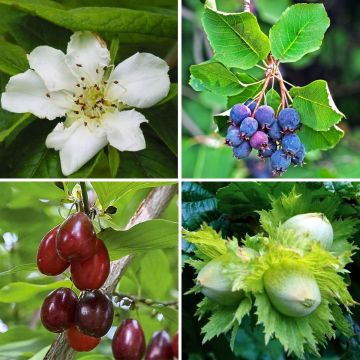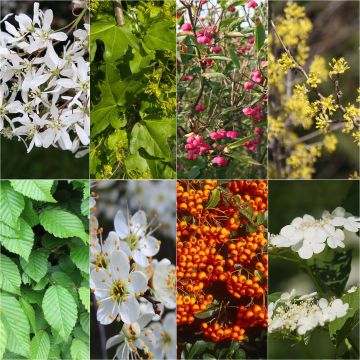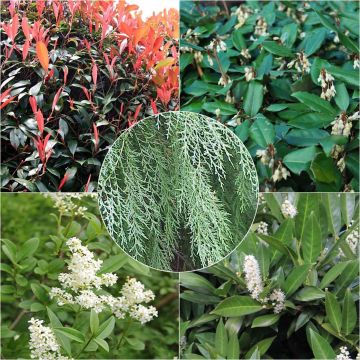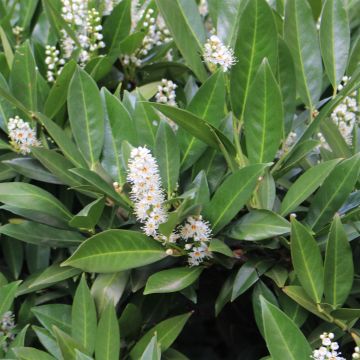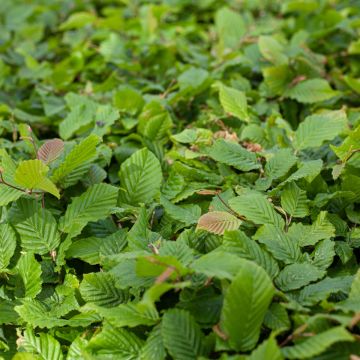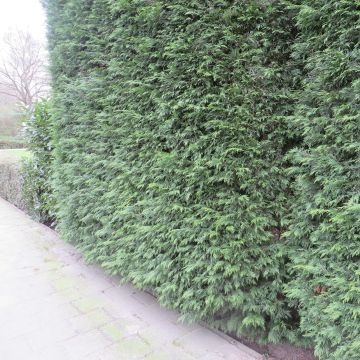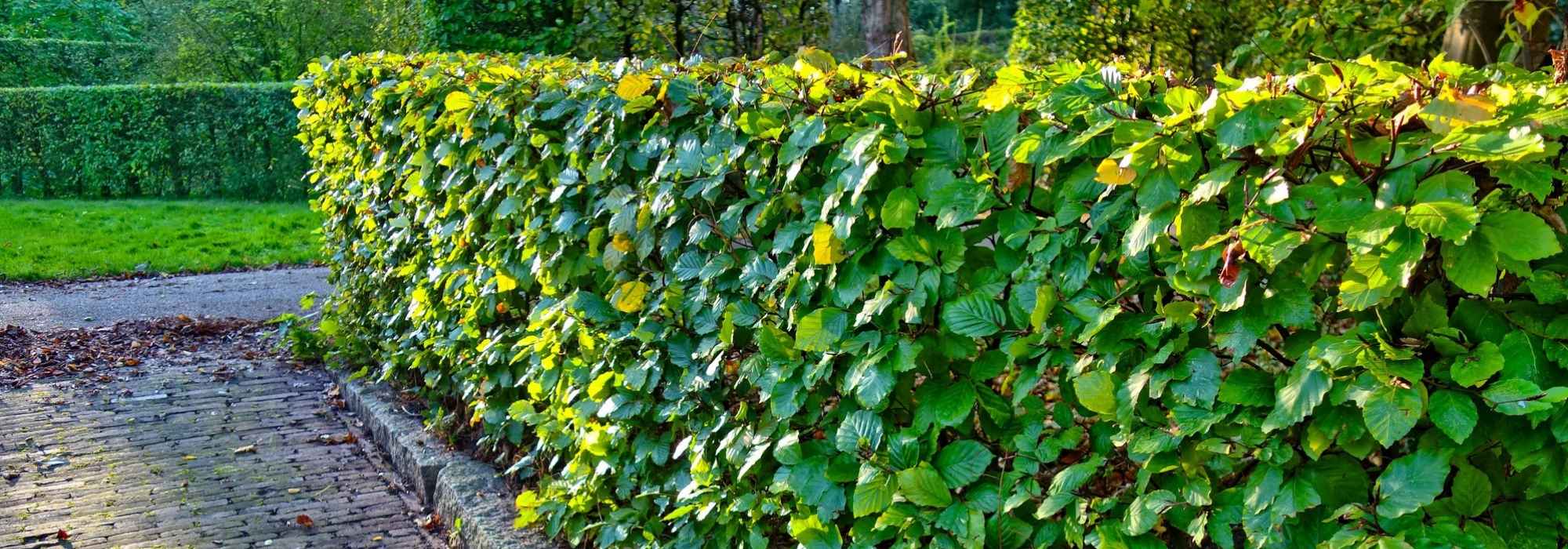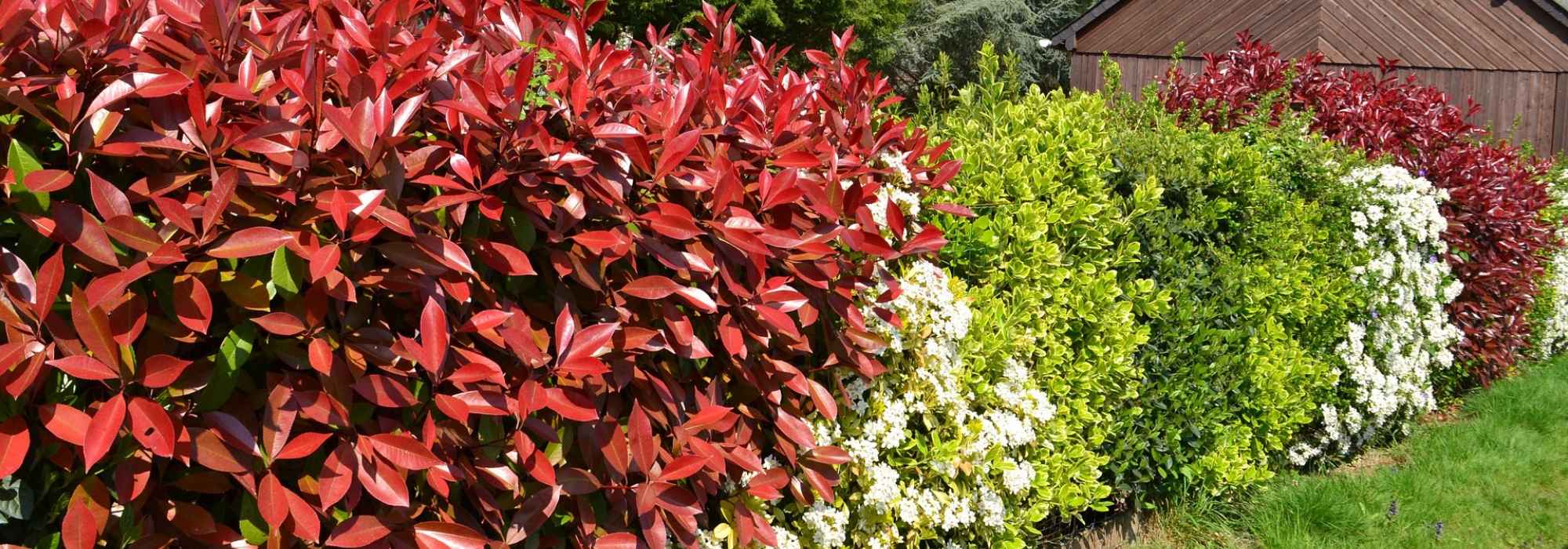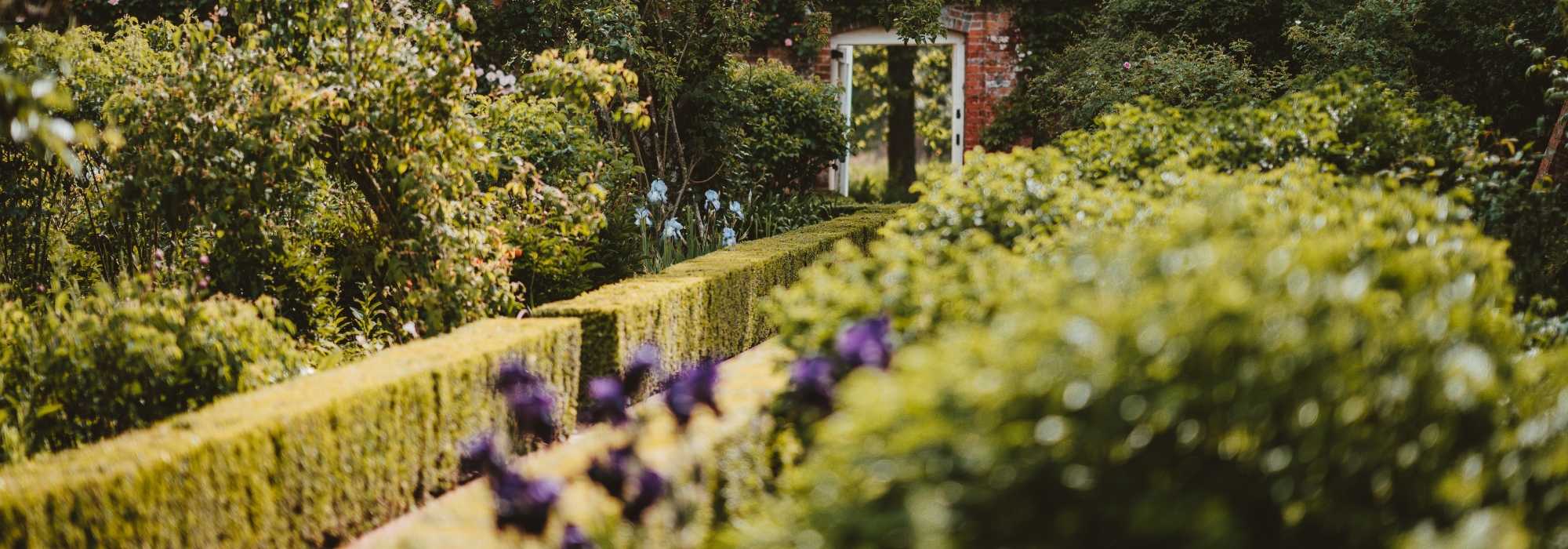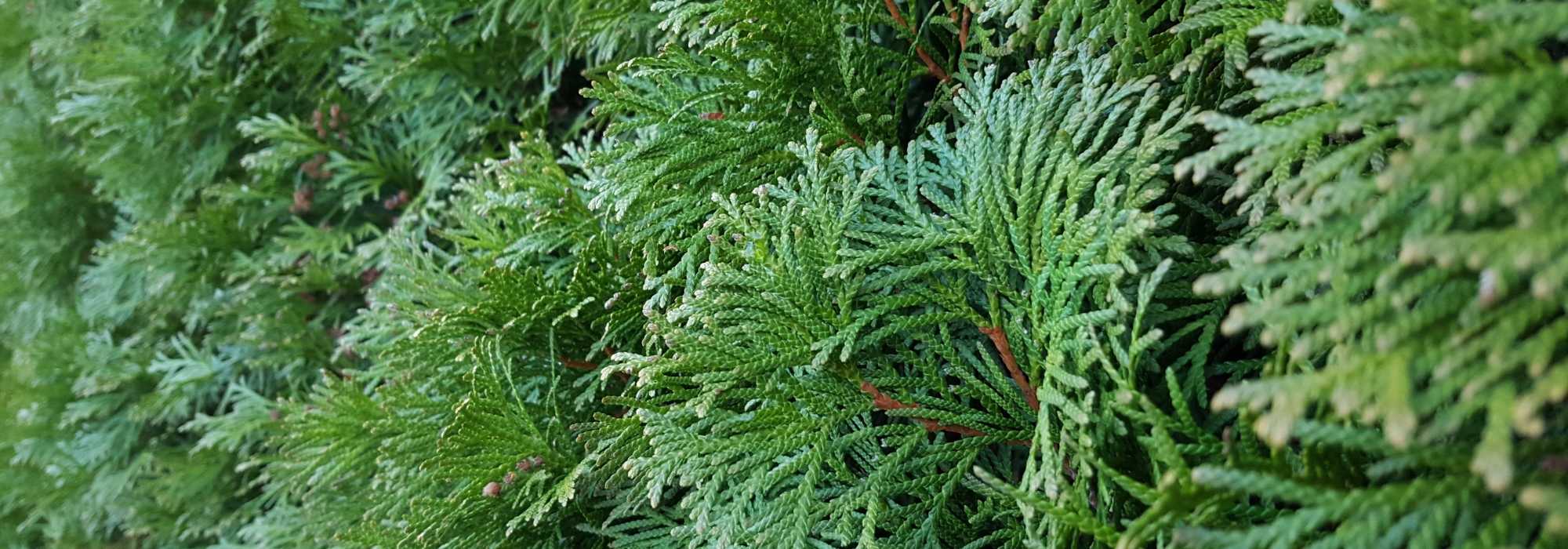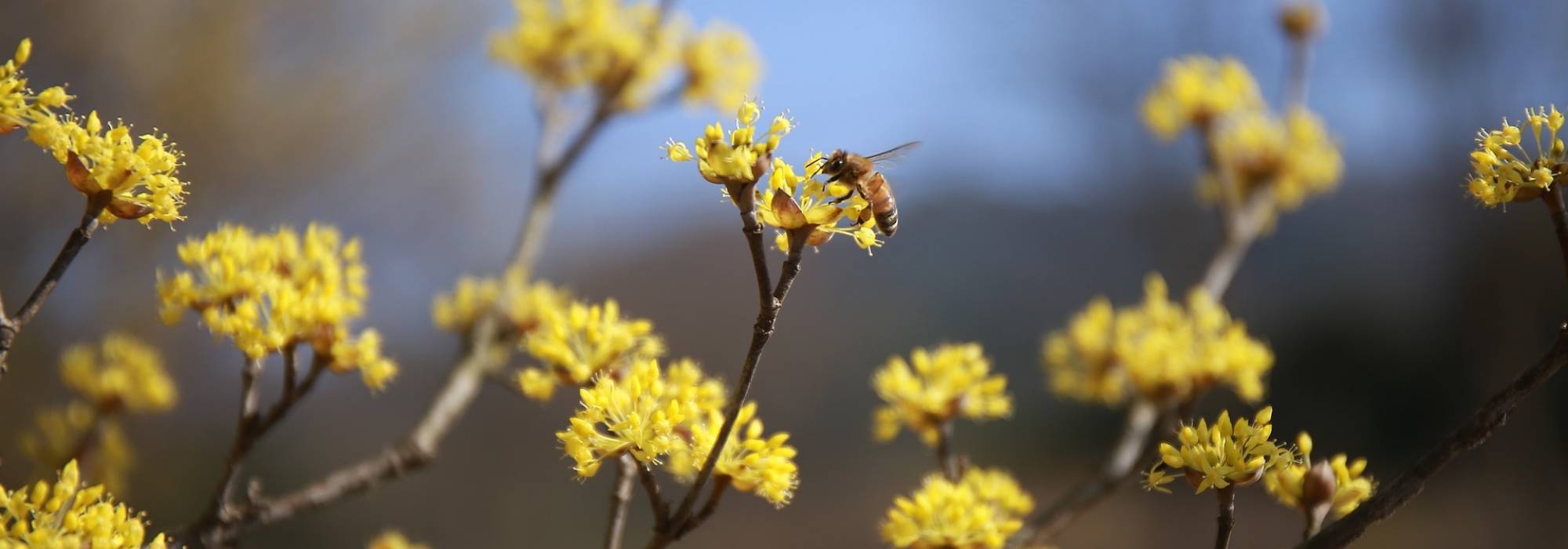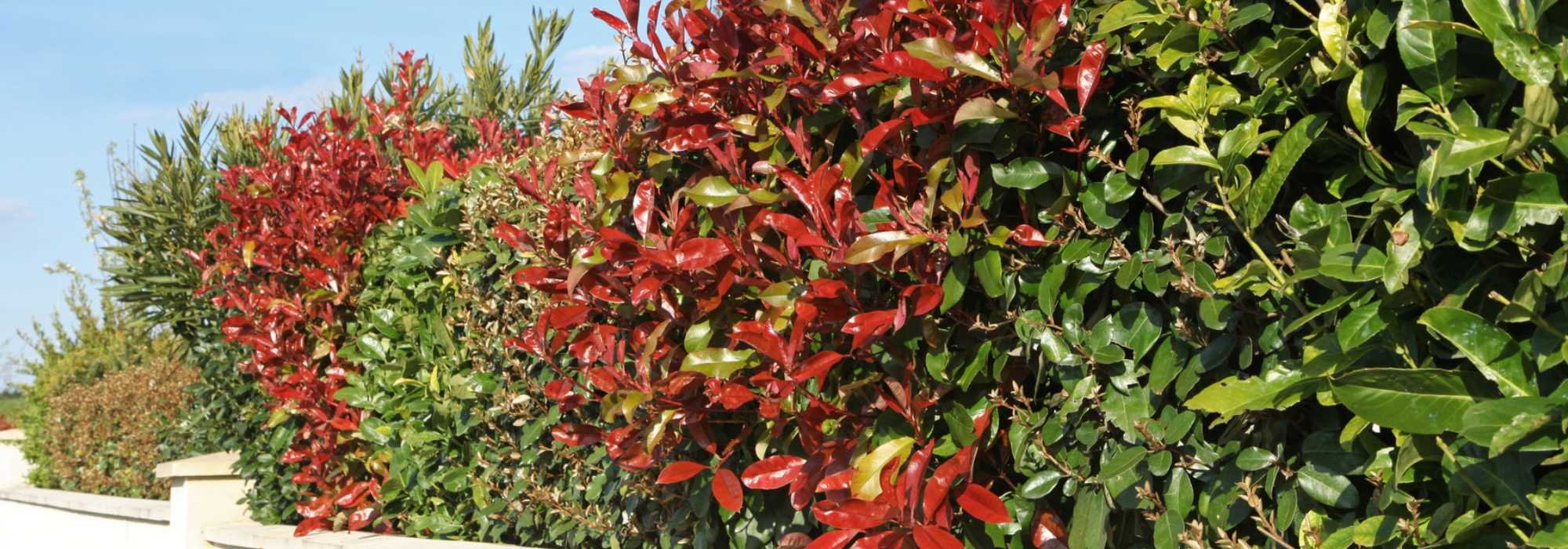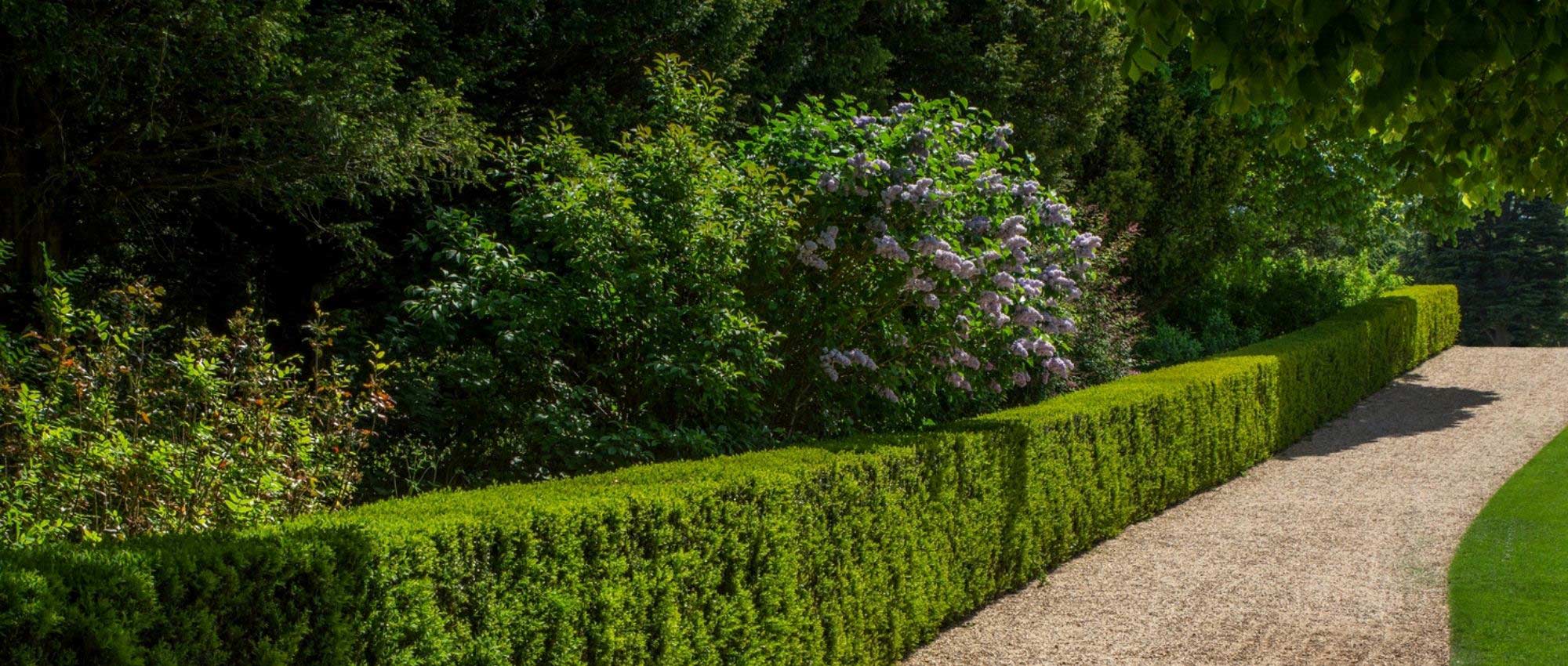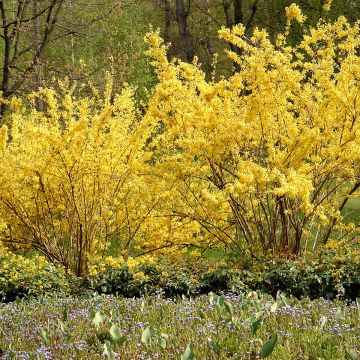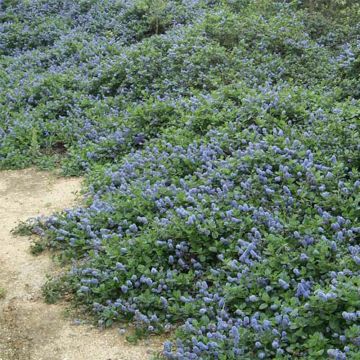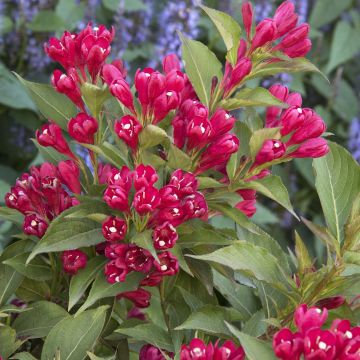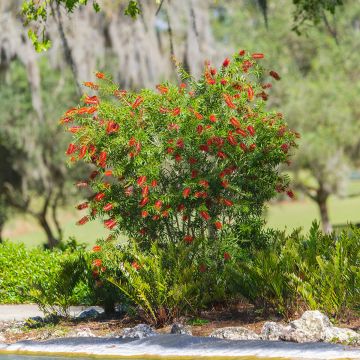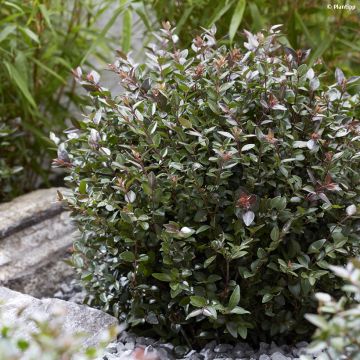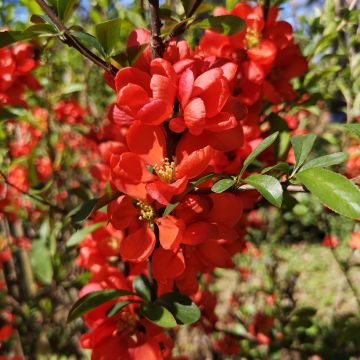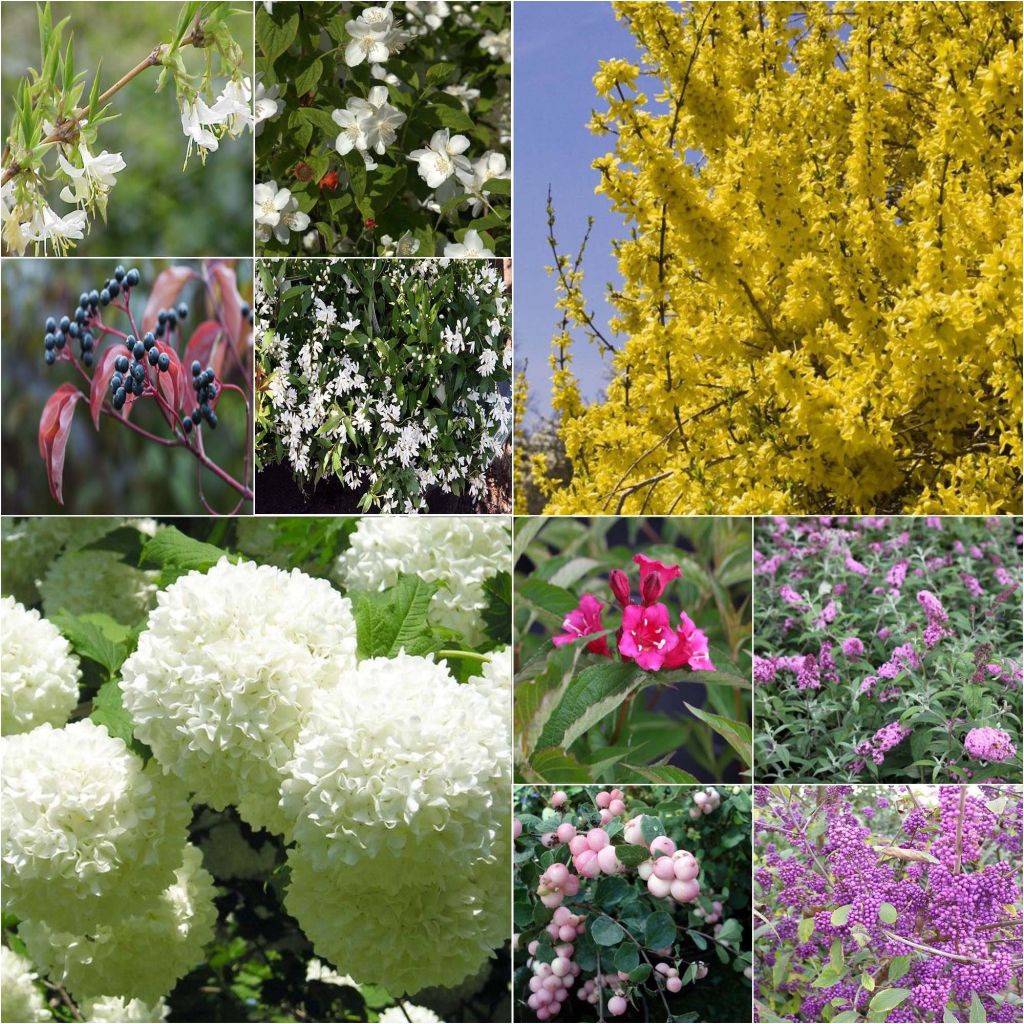

Four Season Flowering Eco Hedge Collection
Four Season Flowering Eco Hedge Collection
Special offer!
Receive a €20 voucher for any order over €90 (excluding delivery costs, credit notes, and plastic-free options)!
1- Add your favorite plants to your cart.
2- Once you have reached €90, confirm your order (you can even choose the delivery date!).
3- As soon as your order is shipped, you will receive an email containing your voucher code, valid for 3 months (90 days).
Your voucher is unique and can only be used once, for any order with a minimum value of €20, excluding delivery costs.
Can be combined with other current offers, non-divisible and non-refundable.
Home or relay delivery (depending on size and destination)
Schedule delivery date,
and select date in basket
This plant carries a 24 months recovery warranty
More information
We guarantee the quality of our plants for a full growing cycle, and will replace at our expense any plant that fails to recover under normal climatic and planting conditions.
Would this plant suit my garden?
Set up your Plantfit profile →
Collection items (10 plants)
Description
This is a collection of 10 varieties of deciduous and hardy shrubs, easy to grow and maintain, forming a constantly evolving ensemble throughout the seasons and remaining decorative all year round. Depending on the plants, they are interesting for their flowering, sometimes for their fragrance, fruiting, the beauty of their wood, or their autumn colours. This hedge will also protect the garden from prying eyes and wind during the summer and provide shelter and food for a variety of useful wildlife. Delivered as a collection of 10 plants in pots. This shrub kit in pots allows you to create approximately 10 metres (33 feet) of four-season hedging at a lower cost.
The collection consists of:
- 1 Lonicera fragrantissima - Winter Honeysuckle: approximately 2.50 m (8ft) in height and 2.75 m (9ft) in width. The foliage is dense, more or less evergreen in winter depending on the climate, and often falls in January-February. Winter flowering, from December to March depending on the region. The very nectar-rich small white flowers are fragrant and give way to small reddish fruits that ripen in late spring and early summer.
- 1 Forsythia intermedia Spectabilis: approximately 2.50 m (8ft) in height and 2 m (7ft) in width, fast-growing. Deciduous foliage, absent in winter. It is one of the first to flower at the end of winter, in March-April, and one of the most floriferous. Its small flowers of a bright yellow appear before the foliage, along the branches.
- 1 Cornus sanguinea Winter Beauty - Bloodtwig Dogwood: approximately 2.50 m (8ft) in height and 1.20 m (4ft) in width. Deciduous foliage, absent in winter. Young stems are shiny, almost fluorescent in winter, in shades of yellow, orange, and red. Its autumn foliage is another asset, yellow to yellow-orange, sometimes slightly tinged with silver. Flowering in May-June, white, slightly fragrant, highly appreciated by pollinating insects. Small round berries that turn dark violet in summer.
- 1 Viburnum opulus Roseum - Snowball Tree: approximately 3.50 m (11ft) in height and 3 m (10ft) in width, fast-growing. Flowering occurs between May and June, the flowers are gathered in beautiful green balls that turn white, 5 to 6 cm (2in) in diameter. Its green foliage turns purple in autumn.
- 1 Deutzia gracilis Nikko - Deutzia: 50 cm (20in) to 1 m (3ft) in height and 60 cm (24in) in width. This small spreading shrub blooms in May-June, producing clusters of multiple bell-shaped flowers in pure white, more or less fragrant. Its deciduous foliage is silver-green during flowering and turns wine-red in autumn before falling.
- 1 Philadelphus coronarius - Mock Orange: between 2 and 3 m (7 and 10ft) in height, almost the same in width. Deciduous foliage, turning yellow in autumn before falling. Flowering in May-June depending on the climate, with numerous cup-shaped white flowers. Its fragrance is very pronounced, giving off delightful orange blossom aromas that attract pollinating insects.
- 1 Buddleia davidii Pink Delight - Butterfly Bush: approximately 3 m (10ft) in height and 4 m (13ft) in width, fast-growing. Flowering from August to October at the end of gracefully arching branches, with dense and upright clusters, 25 cm (10in) long, fragrant and a very pretty bright pink. Its long deciduous leaves fall in autumn.
- 1 Weigela Bristol Ruby: approximately 2.50 m (8ft) in height and 2 m (7ft) in width. Large ramified bush with arched branches, adorned with beautiful funnel-shaped flowers in two shades of red. It blooms abundantly from May to June, and more sporadically in summer. Its deciduous foliage is composed of dark green leaves.
- 1 Callicarpa bodinieri Profusion: approximately 2.50 m (8ft) in height and 1.50 m (5ft) in width. It is known for the abundance and very bright violet colour of its clusters of shiny fruits, decorative in autumn and much of winter. It displays numerous purple shoots in spring, also very decorative, and its autumn foliage, orange to purple, is also very ornamental. Its deciduous foliage falls in October.
- 1 Symphoricarpos dorenbosii - Mother of Pearl Snowberry: approximately 1.50 m (5ft) in all directions. A profusion of pale pink berries, gathered in large and very decorative clusters from August onwards. They remain decorative until January on the bare branches. Discreet summer flowering. The deciduous foliage, dark green in colour, turns beautiful shades of yellow in autumn before falling.
Plant these bushes preferably in autumn or early spring, in full sun or partial shade, mixing and spacing them about 1 metre (3 feet) apart. They are content with any well-prepared garden soil improved with leaf compost. Varied hedges require little or no pruning, allowing you to enjoy the flowers and fruits.
Report an error about the product description
Plant habit
Flowering
Foliage
Botanical data
Cultivar or hybrid
Other Hedge-growing kits A to Z
View all →Planting and care
Plant this collection in the sun or partial shade, in ordinary but well-prepared soil, enriched with leaf compost, that is rather moist but well-drained. Dig planting holes of 30-40 cm (12-16in) in all directions, thoroughly loosening the bottom and walls with a fork or pickaxe. Maintain a planting distance of 80 cm (32in) to 1 m (3ft) between each bush. Easy to grow and not very demanding, these shrubs only require mulching in summer in dry climates to maintain some moisture, at least during the first summers after planting. Water them abundantly in the first few years in the case of pronounced drought (15-20 litres of water each time), but keep waterings spaced out. You can prune the longest branches to help your shrubs branch out.
Planting period
Intended location
Care
Planting & care advice
This item has not been reviewed yet - be the first to leave a review about it.
Similar products
Haven't found what you were looking for?
Hardiness is the lowest winter temperature a plant can endure without suffering serious damage or even dying. However, hardiness is affected by location (a sheltered area, such as a patio), protection (winter cover) and soil type (hardiness is improved by well-drained soil).

Photo Sharing Terms & Conditions
In order to encourage gardeners to interact and share their experiences, Promesse de fleurs offers various media enabling content to be uploaded onto its Site - in particular via the ‘Photo sharing’ module.
The User agrees to refrain from:
- Posting any content that is illegal, prejudicial, insulting, racist, inciteful to hatred, revisionist, contrary to public decency, that infringes on privacy or on the privacy rights of third parties, in particular the publicity rights of persons and goods, intellectual property rights, or the right to privacy.
- Submitting content on behalf of a third party;
- Impersonate the identity of a third party and/or publish any personal information about a third party;
In general, the User undertakes to refrain from any unethical behaviour.
All Content (in particular text, comments, files, images, photos, videos, creative works, etc.), which may be subject to property or intellectual property rights, image or other private rights, shall remain the property of the User, subject to the limited rights granted by the terms of the licence granted by Promesse de fleurs as stated below. Users are at liberty to publish or not to publish such Content on the Site, notably via the ‘Photo Sharing’ facility, and accept that this Content shall be made public and freely accessible, notably on the Internet.
Users further acknowledge, undertake to have ,and guarantee that they hold all necessary rights and permissions to publish such material on the Site, in particular with regard to the legislation in force pertaining to any privacy, property, intellectual property, image, or contractual rights, or rights of any other nature. By publishing such Content on the Site, Users acknowledge accepting full liability as publishers of the Content within the meaning of the law, and grant Promesse de fleurs, free of charge, an inclusive, worldwide licence for the said Content for the entire duration of its publication, including all reproduction, representation, up/downloading, displaying, performing, transmission, and storage rights.
Users also grant permission for their name to be linked to the Content and accept that this link may not always be made available.
By engaging in posting material, Users consent to their Content becoming automatically accessible on the Internet, in particular on other sites and/or blogs and/or web pages of the Promesse de fleurs site, including in particular social pages and the Promesse de fleurs catalogue.
Users may secure the removal of entrusted content free of charge by issuing a simple request via our contact form.
The flowering period indicated on our website applies to countries and regions located in USDA zone 8 (France, the United Kingdom, Ireland, the Netherlands, etc.)
It will vary according to where you live:
- In zones 9 to 10 (Italy, Spain, Greece, etc.), flowering will occur about 2 to 4 weeks earlier.
- In zones 6 to 7 (Germany, Poland, Slovenia, and lower mountainous regions), flowering will be delayed by 2 to 3 weeks.
- In zone 5 (Central Europe, Scandinavia), blooming will be delayed by 3 to 5 weeks.
In temperate climates, pruning of spring-flowering shrubs (forsythia, spireas, etc.) should be done just after flowering.
Pruning of summer-flowering shrubs (Indian Lilac, Perovskia, etc.) can be done in winter or spring.
In cold regions as well as with frost-sensitive plants, avoid pruning too early when severe frosts may still occur.
The planting period indicated on our website applies to countries and regions located in USDA zone 8 (France, United Kingdom, Ireland, Netherlands).
It will vary according to where you live:
- In Mediterranean zones (Marseille, Madrid, Milan, etc.), autumn and winter are the best planting periods.
- In continental zones (Strasbourg, Munich, Vienna, etc.), delay planting by 2 to 3 weeks in spring and bring it forward by 2 to 4 weeks in autumn.
- In mountainous regions (the Alps, Pyrenees, Carpathians, etc.), it is best to plant in late spring (May-June) or late summer (August-September).
The harvesting period indicated on our website applies to countries and regions in USDA zone 8 (France, England, Ireland, the Netherlands).
In colder areas (Scandinavia, Poland, Austria...) fruit and vegetable harvests are likely to be delayed by 3-4 weeks.
In warmer areas (Italy, Spain, Greece, etc.), harvesting will probably take place earlier, depending on weather conditions.
The sowing periods indicated on our website apply to countries and regions within USDA Zone 8 (France, UK, Ireland, Netherlands).
In colder areas (Scandinavia, Poland, Austria...), delay any outdoor sowing by 3-4 weeks, or sow under glass.
In warmer climes (Italy, Spain, Greece, etc.), bring outdoor sowing forward by a few weeks.
































